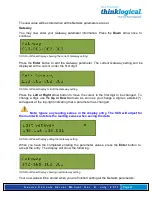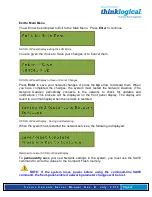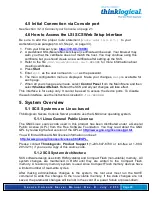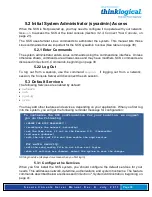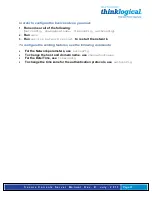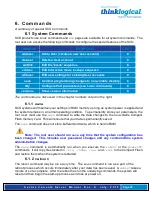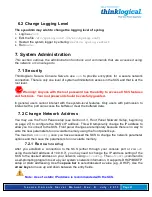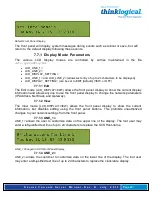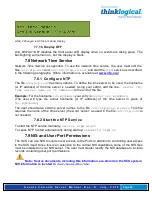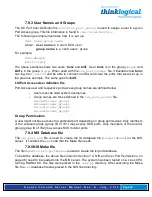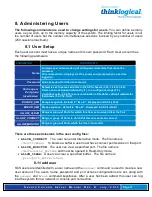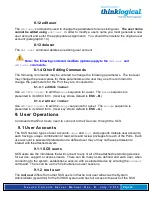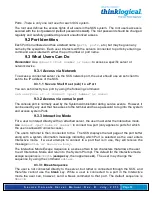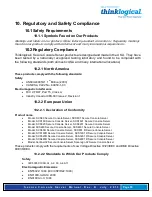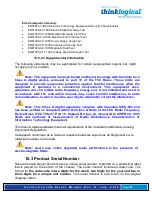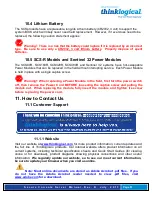
S e c u r e C o n s o l e S e r v e r M a n u a l , R e v . K , J u l y , 2 0 1 3
Page 43
7.2.2 More Than One Nameserver
The
netconfig
command allows the user to set up one nameserver’s IP address. It is
possible to have multiple nameservers, which must be done outside of the
netconfig
command. The nameserver data is in the file
/etc/resov.conf
.
If you want to have more
than one nameserver, you must edit the file
.
For more information, refer to the
man
page
for
resolv.conf
.
In this file, you will find the IP address you entered with
netconfig
.
You can add the
address of additional nameservers. (a maximum of 3 nameservers is allowed) to this file.
The format of a line is:
nameserver <IP address>.
7.3 Change Hostname
The SCS includes a command
changehostname
which allows the root user to change the
long hostname of the SCS unit.
1. Log in as
root
.
2. Type
changehostname
. The current hostname is displayed and you are prompted to
choose
y/n
to proceed.
3. If you select
y
(yes) to change, you are prompted to enter the new hostname.
!
Note: If you make a mistake in your entry, do not attempt to edit it. Reject the
incorrect entry and re-enter the value properly.
4. Enter your new hostname value. Press
y
to accept the new value.
5. Remember to run
save
when done to keep your new values.
6. After changing the hostname and/or clock settings, reboot to make the changes
permanent. These two settings (clock and hostname) are only saved during an
orderly shutdown. Loss of power before reboot will revert to the old values.
7.4 Time Configuration
Use the command
timeconfig
to set up the date/time and time coordinates. This is a self-
prompting utility. To keep your values, run
save
when completed. After changing clock
settings, reboot the SCS to make changes permanent.
!
Note: If changing the Time Zone (during
timeconfig
changes) restart the LCD
display service so the front panel display can update. Use the command
service lcd
restart
after completing the
timeconfig
options.
7.5 Change NIC Speed
You can change the NIC interface configuration to auto-sensing or fixed, to full or half duplex,
and to 10Mb or 100Mb. The following file information is found in the file
/etc/modules.conf
with some additional instructions on to how to set the NIC speed.



